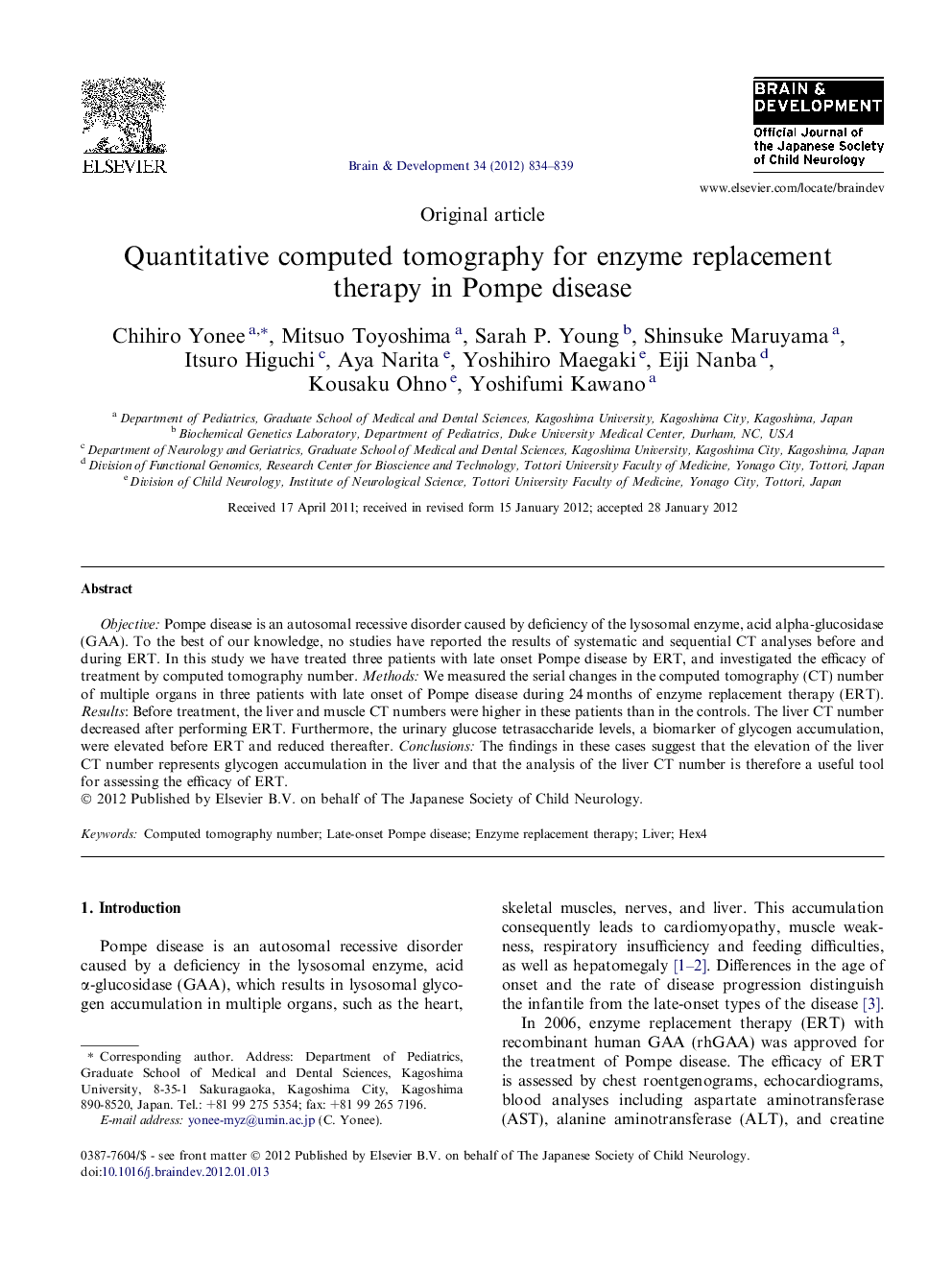| Article ID | Journal | Published Year | Pages | File Type |
|---|---|---|---|---|
| 3037299 | Brain and Development | 2012 | 6 Pages |
Objective: Pompe disease is an autosomal recessive disorder caused by deficiency of the lysosomal enzyme, acid alpha-glucosidase (GAA). To the best of our knowledge, no studies have reported the results of systematic and sequential CT analyses before and during ERT. In this study we have treated three patients with late onset Pompe disease by ERT, and investigated the efficacy of treatment by computed tomography number. Methods: We measured the serial changes in the computed tomography (CT) number of multiple organs in three patients with late onset of Pompe disease during 24 months of enzyme replacement therapy (ERT). Results: Before treatment, the liver and muscle CT numbers were higher in these patients than in the controls. The liver CT number decreased after performing ERT. Furthermore, the urinary glucose tetrasaccharide levels, a biomarker of glycogen accumulation, were elevated before ERT and reduced thereafter. Conclusions: The findings in these cases suggest that the elevation of the liver CT number represents glycogen accumulation in the liver and that the analysis of the liver CT number is therefore a useful tool for assessing the efficacy of ERT.
